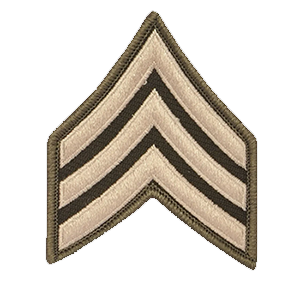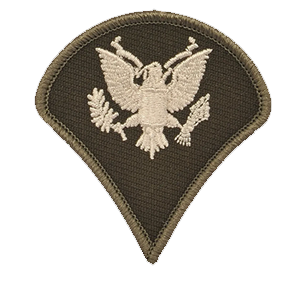
-

US Army Air Corps Established

The establishment of the US Army Air Corps marked a pivotal moment in military history, reflecting the growing recognition of air power's significance in modern warfare. Formed on July 2, 1926, as a successor to the Air Service, the Air Corps represented a critical step toward creating an independent and powerful air force.
The roots of the Air Corps can be traced back to the early 20th century, a period marked by rapid advancements in aviation technology. During World War I, the Air Service, a division within the Signal Corps, demonstrated the potential of aircraft in reconnaissance, tactical support, and strategic bombing. However, the post-war era saw the Air Service struggling for recognition and resources amid a predominantly ground-focused military structure.
Advocates for a robust air force, such as Brigadier General Billy Mitchell, played an instrumental role in pushing for the creation of an autonomous air arm. Mitchell's unrelenting advocacy, including dramatic demonstrations of air power, such as the bombing of decommissioned battleships, underscored the strategic importance of aviation. His efforts, despite resulting in his court-martial, laid the groundwork for the formation of the Air Corps.
The National Defense Act of 1926 officially established the Air Corps, granting it greater autonomy within the Army and increased funding. This legislative move was a response to the growing realization that air superiority would be crucial in future conflicts. The Air Corps' creation allowed for dedicated development of aviation technology, training of specialized personnel, and formulation of air tactics and strategies.
Throughout the interwar period, the Air Corps made significant strides in advancing aircraft design and doctrine. The development of bombers like the B-17 Flying Fortress and fighters such as the P-40 Warhawk showcased American ingenuity and foresight. These innovations were critical in preparing the United States for the aerial battles of World War II.
In essence, the establishment of the US Army Air Corps was not merely a bureaucratic change but a transformative step towards recognizing and harnessing the full potential of air power. It set the stage for the emergence of the United States as a dominant force in aerial warfare, ultimately leading to the formation of the United States Air Force as an independent branch in 1947. The legacy of the Air Corps endures in the principles of innovation, strategy, and resilience that continue to define American air power today.
0 Comments | Reported By CPL G.Nagy
-

National PTSD Awareness Day

National PTSD Awareness Day, observed on June 27th, is a day dedicated to raising awareness about Post-Traumatic Stress Disorder, particularly as it affects military personnel and veterans. However, PTSD can impact anyone who has experienced trauma, including first responders, survivors of abuse, accidents, natural disasters, and violent incidents. This day serves to educate the public about the impact of PTSD, promoting understanding and support for all who are affected.
PTSD is a significant issue among military personnel who have been exposed to the horrors of war. The experiences of combat, witnessing death, and the constant threat of danger can leave deep psychological scars. Symptoms of PTSD in military members include flashbacks, nightmares, severe anxiety, and intrusive thoughts about their traumatic experiences. These symptoms can disrupt their ability to reintegrate into civilian life, affecting their relationships, employment, and overall well-being.
In the past, PTSD in military personnel was often misunderstood and stigmatized. Terms like "shell shock" and "combat fatigue" were used to describe the condition, often minimizing its severity and leading to inadequate treatment. Soldiers were expected to tough it out, and mental health issues were seen as a sign of weakness. Today, we have a better understanding of PTSD as a serious and legitimate condition. By raising awareness, we can help reduce the stigma that often surrounds mental health issues in the military community. Acknowledging the struggles faced by our service members and veterans is the first step towards creating a supportive environment where they feel comfortable seeking help.
PTSD also affects many people outside the military. First responders, such as police officers, firefighters, and paramedics, frequently encounter traumatic events in their line of duty. Survivors of abuse, accidents, natural disasters, and violent incidents can also develop PTSD. Public awareness and understanding are crucial in ensuring that these individuals receive the support and treatment they need.
On this day, various activities and events are organized to spread awareness and educate the public. These include seminars, workshops, social media campaigns, and community gatherings. Veterans' organizations and mental health advocates use this opportunity to share information about PTSD, its symptoms, and the treatment options available. They also highlight the importance of early intervention and the role of family and community support in the recovery process.
One of the key messages of National PTSD Awareness Day is that help is available, and no one should suffer in silence. Effective treatments, such as cognitive-behavioral therapy, eye movement desensitization and reprocessing , and medication, can significantly improve the quality of life for those with PTSD. Support from fellow veterans, military support groups, and mental health professionals is crucial in helping affected individuals navigate their path to recovery.
National PTSD Awareness Day is a crucial observance that plays a significant role in increasing understanding and support for military personnel, veterans, and civilians affected by PTSD. By raising awareness, educating the public, and promoting open conversations about mental health, we can help all affected individuals seek the help they need and deserve. Let us use this day to honor their courage and resilience and commit to creating a society that offers compassion and support to all who have faced trauma.
0 Comments | Reported By CPL G.Nagy
-

OSUT graduates #24-25

Congratulations to the soldiers of OSUT class 24-25 (Arma3) for successful completion of training! These soldiers have been awarded the Army Service Ribbon and have earned the right to be full active members of their squad and the unit! This is merely the first step in your career here at 3rdID, we look forward to your continued success! Hooah
Graduates :
 PV2 D.Fox
PV2 D.Fox 

 PFC C.Clinkscales
PFC C.Clinkscales 


Instructors :
 SGT A.Shocked
SGT A.Shocked
 CPL A.Zvik
CPL A.Zvik
 SPC B.Montana
SPC B.Montana
 SPC S.Ohwo
SPC S.Ohwo
 SPC I.Bar-Tal
SPC I.Bar-Tal
0 Comments | Reported By SPC J.Erickson
-

Korean War Starts

The Korean War began on June 25, 1950, when North Korean forces, backed by the Soviet Union and China, crossed the 38th parallel and invaded South Korea. This aggressive move shocked the world and marked the beginning of a brutal conflict that would last for three years.
The roots of the Korean War lie in the division of Korea at the end of World War II. The peninsula, previously under Japanese rule, was divided along the 38th parallel by the Allies, with the Soviet Union occupying the north and the United States occupying the south. This division was intended to be temporary, but as Cold War tensions escalated, it solidified into a permanent split, creating two separate governments: the communist North, led by Kim Il-sung, and the capitalist South, led by Syngman Rhee.
On the dawn of June 25, 1950, North Korean artillery opened fire along the 38th parallel, and infantry divisions quickly followed. The South Korean army, unprepared and outgunned, was swiftly overrun. Within days, North Korean forces captured Seoul, the South Korean capital, and continued to push southward.
The invasion prompted a swift response from the United Nations. On June 27, the UN Security Council, in the absence of the Soviet Union, which was boycotting the council, passed a resolution calling for member states to assist South Korea. The United States, under President Harry S. Truman, took immediate action, committing air and naval forces to the conflict and later sending ground troops.
The Korean War saw dramatic shifts in momentum. Initially, North Korean forces nearly succeeded in conquering the entire peninsula, but UN forces, primarily composed of U.S. troops, launched a successful counteroffensive, recapturing Seoul and pushing the North Koreans back. The war then settled into a bloody stalemate, with both sides suffering heavy casualties.
The conflict would continue until July 27, 1953, when an armistice was signed, establishing the Korean Demilitarized Zone (DMZ) and effectively ending the fighting. However, a formal peace treaty was never signed, and the Korean Peninsula remains divided and tense to this day. The Korean War not only left a profound impact on Korea but also intensified Cold War tensions worldwide, shaping the geopolitical landscape for decades to come.
1 Comment | Reported By CPL G.Nagy
-

OSUT graduates #24-24

Congratulations to the soldiers of OSUT class 24-24 (Arma3) for successful completion of training! These soldiers have been awarded the Army Service Ribbon and have earned the right to be full active members of their squad and the unit! This is merely the first step in your career here at 3rdID, we look forward to your continued success! Hooah
Graduates :
 PV2 J.Moffet
PV2 J.Moffet 

 PV2 D.Ngoc
PV2 D.Ngoc 

Instructors :
 SGT W.Fives
SGT W.Fives
 CPL H.McMahon
CPL H.McMahon
 SPC D.Hughson
SPC D.Hughson
 WOC S.Rogers
WOC S.Rogers
0 Comments | Reported By SPC J.Erickson
655 articles
-
- 0 comments
- 140 views
-

- Added by SGT D.Smiřický
-
- 0 comments
- 153 views
-

- Added by SPC J.Erickson
-
- 0 comments
- 194 views
-

- Added by SGT D.Smiřický
-
- 0 comments
- 145 views
-

- Added by SGT D.Smiřický
-
- 0 comments
- 200 views
-

- Added by SPC J.Erickson





 PV2 D.Fox
PV2 D.Fox 

 PFC C.Clinkscales
PFC C.Clinkscales 


 SGT A.Shocked
SGT A.Shocked
 CPL A.Zvik
CPL A.Zvik
 SPC B.Montana
SPC B.Montana
 SPC S.Ohwo
SPC S.Ohwo
 SPC I.Bar-Tal
SPC I.Bar-Tal


 PV2 J.Moffet
PV2 J.Moffet 

 PV2 D.Ngoc
PV2 D.Ngoc 




